
There are hundreds of metrics that are in play when it comes to business valuations. But all of them belong to one of 4 distinct categories, making up the 4 Pillars of Business Valuation, a concept originally conceived by our good friend Mark Daoust at Quiet Light Brokerage.
These 4 pillars are:
- Growth
- Risk
- Transferability
- Verifiability
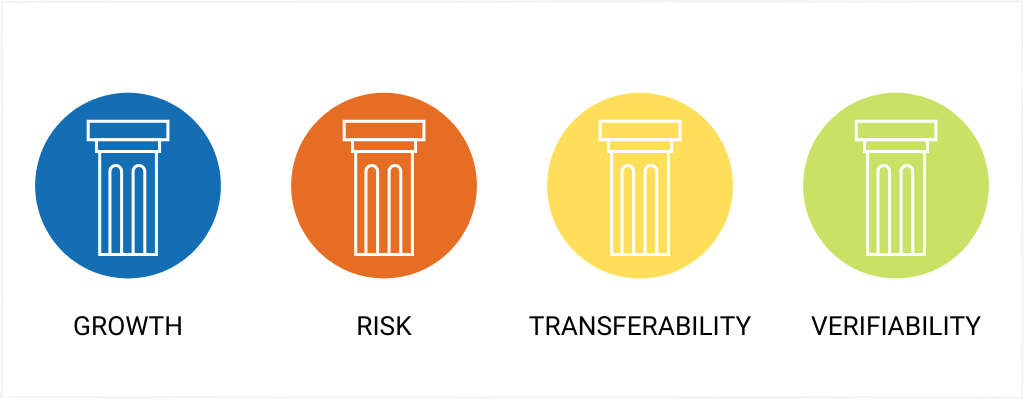
Don’t get me wrong. The main thing that determines the value of a business is always how much money it earns. But all the secondary metrics come in play when determining the correct multiple that should be applied to your earnings.
And the difference can be significant, with multiples often ranging anywhere from as little as 1.5x yearly earnings to as much as 4.5x and more, in some cases.
So let’s take a look at the 4 pillars, what they’re made of and what are the key metrics you as a business owner should pay attention to.
Pillar I: Growth
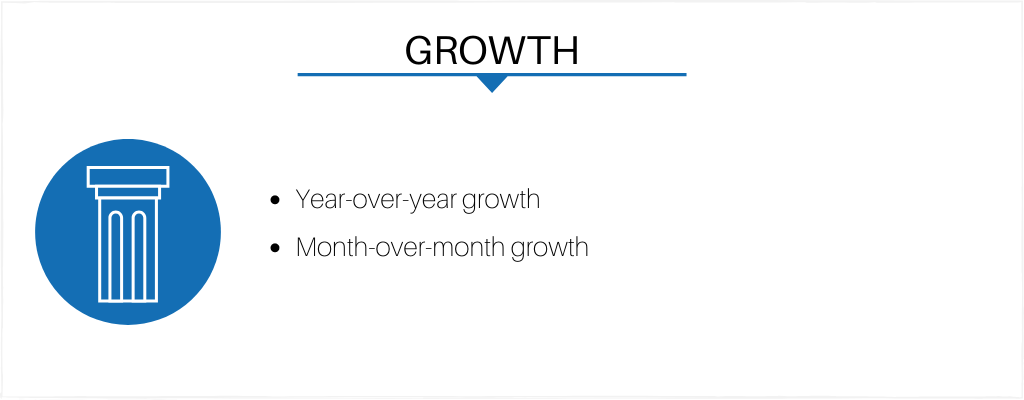
Growth is one of the biggest value-influencers that there is.
It’s also the pillar that’s the easiest-to-understand, but the most difficult one to control, at least in the short term.
This pillar encompasses both your Year-over-Year growth (say, February last year VS February this year), as well as your ongoing or Month-over-Month growth.
Generally speaking, any buyer of any kind of business will want to see both of these trends ticking in the upwards direction. And it’s understandable, of course. If your business has been showing growth so far then it’s reasonable to expect the same trend to continue into the future, making the buyer more money. But if the business is flat or declining, the buyer would similarly expect that trend to continue.
Because of this, it’s always the growing businesses that achieve the highest multiples and valuations by far, and also tend to sell the quickest.
Never underestimate the value of growth. While the valuation of a $100k business that’s growing 10% a year can easily be in the $350k range, the value of a $100k business that’s declining 10% a year is likely going to be in the $150k range. HUGE difference.
Pillar II: Risk
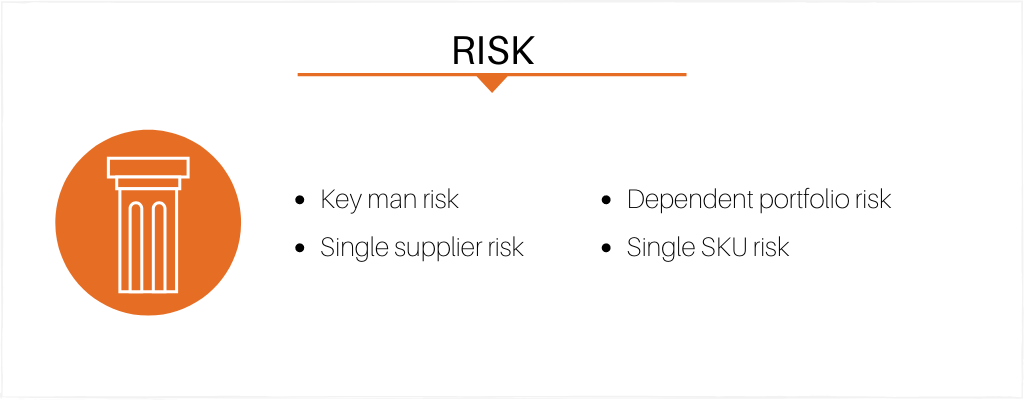
Risk is the pillar that encompasses the most. What we’re mainly looking for is any sort of risk to the business’s revenue, or even to its very existence.
But there are two kinds of risk – one that you can do something about and one that you can’t. Let me explain.
The Good Risk
As we’re talking about Amazon FBA businesses, the mere fact that all or most of the business’s revenue comes through one channel (Amazon) presents a serious risk. As does the fact that you’re (probably) sourcing your products from China.
But neither of these are something that you can (or should) do anything about. It’s not your job to build the least risky business in the universe, but rather to decrease your risk in comparison to your competition. You can quite safely assume that most other FBA businesses share the same Amazon risk, as well as the China-risk, so neither of these two risk factors should be very high up in your priority list to “deal with”.
The Bad Risk
There are other kinds of risk that you can and absolutely should do something about. Some examples would be:
- Key man risk. Is there a single person (this could also be you!) who has the full know-how of the whole business, and taking this person away would make the business suffer?
- Single supplier risk. Do you have just one supplier with whom you’ve negotiated great rates, with no backup suppliers in sight? What happens if the supplier goes out of business or decides to raise their prices?
- Dependent portfolio risk. Are your products dependent on some other product or company? Are they still relevant when the next iPhone, Nespresso machine or Pokemon is released?
- Single SKU risk. Are most of your sales generated from selling a single product? What happens if you go out of stock or your listing gets temporarily pulled?
… and so forth.
As I said, there’s A LOT that falls under this category, so keep an eye out for a series of articles covering common risk factors and the ways to mitigate them.
Pillar III: Transferability
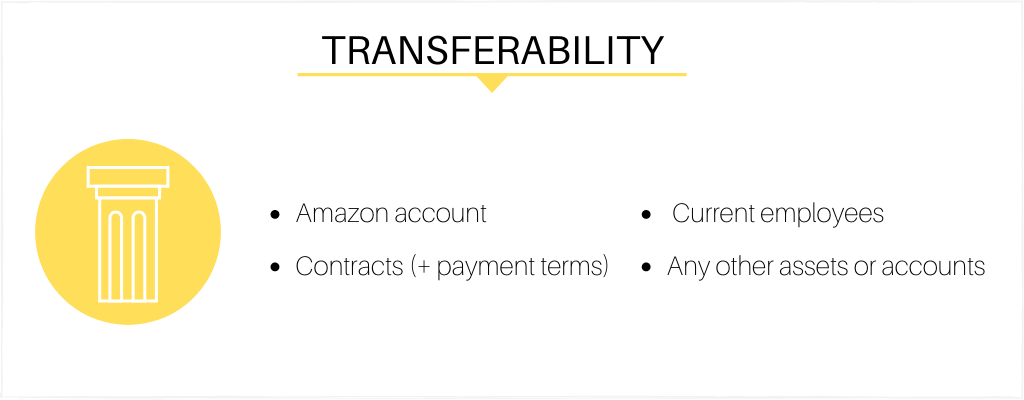
Transferability is a pretty straight-forward one.
The buyer of your business wants to make sure that the business can easily be transferred to them, without the risk of revenue loss or worse.
There are some pretty important things that ensure transferability, especially the transferability of an Amazon account itself, but in general, you’ll want to ensure that:
- You’re including the Amazon account with the business. Otherwise, the transferability of the business suffers significantly.
- Your contracts (and ideally, payment terms) with your manufacturers can be transferred.
- Any employees you have will be transferred and are happy to continue working under new ownership.
- Any other assets or accounts that the business uses can be transferred without issues.
There’s a little bit more to it, though, and poor transferability influences not only your valuation but it’s also something that often results in deals falling through on the 11th hour. But a good broker will help you through this and have you make the necessary prep-work to avoid any big risks.
Pillar IV: Verifiability
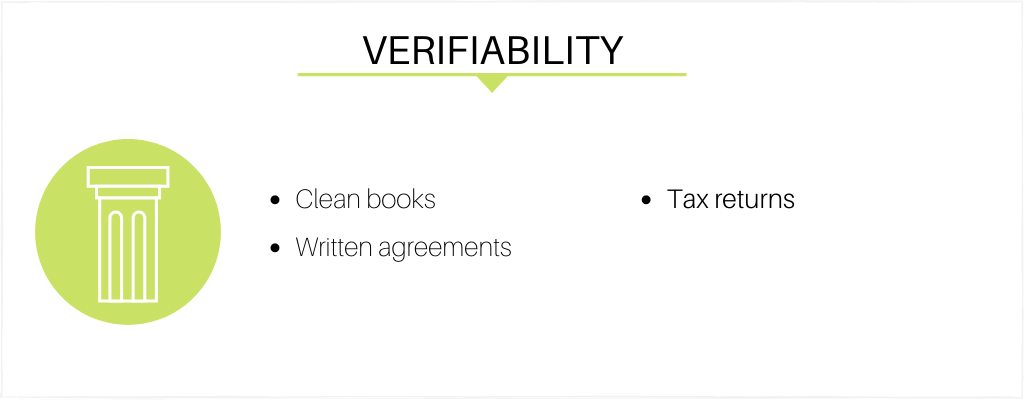
No buyer wants to buy a pig in a poke, so being able to verify your claims and having good documentation is incredibly important.
Now, what do I mean by good documentation?
Well, Amazon makes it pretty easy in the first place, as all of your product-related metrics are right there in your Seller Central account.
But even then, there are a few things you need to take care of on your own. Primarily:
- Clean books.The best businesses have sparkling-clean books, meaning few or no unrelated expenses, a proper Profit & Loss statement and clean categorization. A good accountant will take care of all that.
- Written Agreements. I know that with many Asian manufacturers, having written agreements in place is not the norm, but many buyers value this a lot so it’s worth doing your best to get something in place. The same applies to your employees and contractors.
- Tax Returns. It always helps to have at least 2-3 years worth of tax returns available and matching the figures on your P&L Statement. This helps the buyer verify the accuracy of your claims, but also to obtain bank financing for the purchase.
And there you have it – a quick intro to the 4 pillars.
Look out for more material, particularly on the growth pillar and the associated strategies, as well as the common pitfalls that hinder growth and lower valuations.
If you have any questions in the meantime, just post them below. I strive to respond personally to as many comments as I can.




